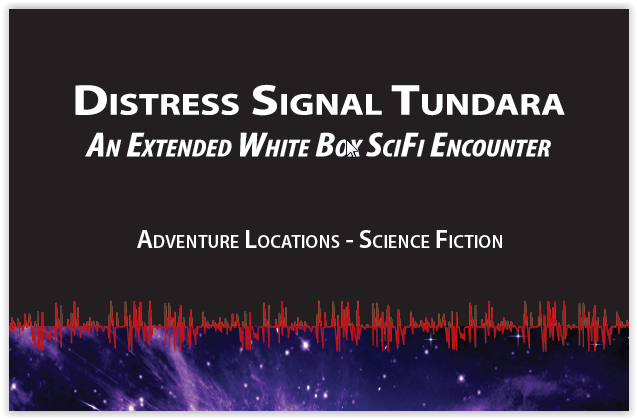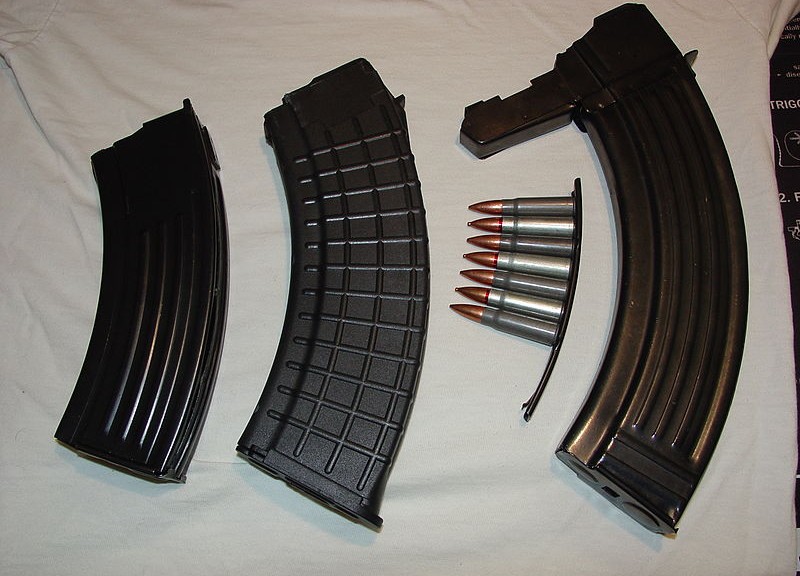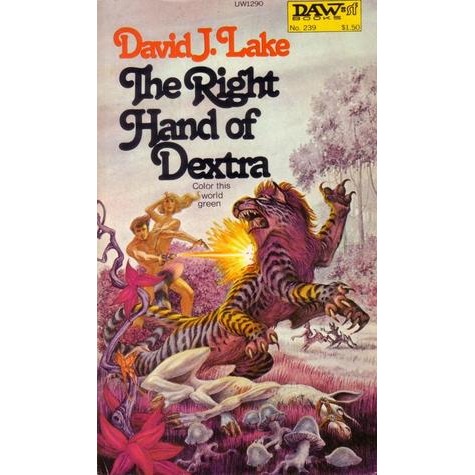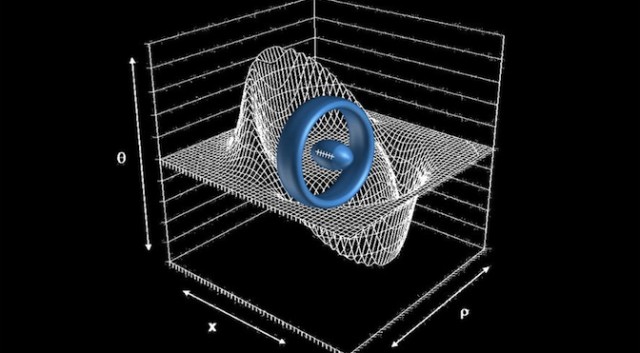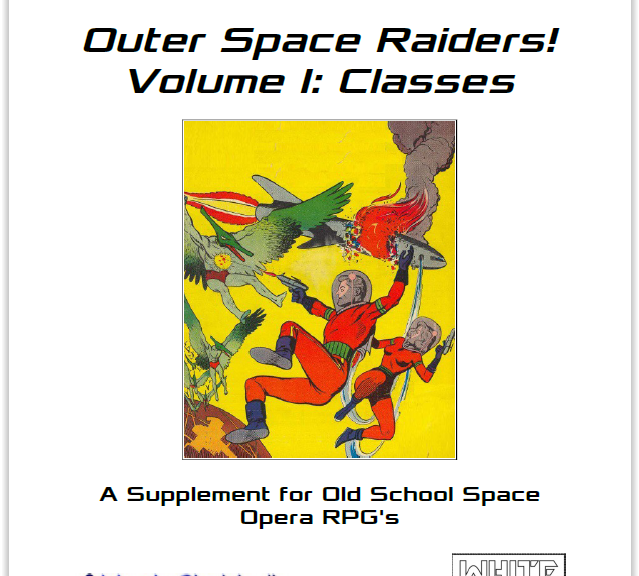Some recent blog postings about White Star and various other RPG’s have used the term clip, where I believe they mean magazine. I find such misuse of terminology annoying, so I suppose the following counts as a rant. I will conclude with the appropriate Joesky Tax.
Clip – A device that holds several rounds together to aid in loading the internal box magazine. The clip for an M1 Garand is an en bloc clip and is inserted into the box magazine with the attached ammunition, and the clip is ejected when the last round is fired. The clip for a Mosin Nagant is a stripper clip that holds 5 rounds and aligns the ammunition to speed loading it into the box magazine. For the Mosin Nagant, without a clip one can load the 5 round magazine one round at a time. Some revolvers use moon clips.
Speedloader – These are generally thought of in reference to pistols, but stripper clips and moon clips fall into this category.
Magazine – A device that holds ammunition. Magazines may be part of the firearm and are loaded using a clip or single rounds. Other magazines, like for the M16, AR-15, AK-47, 1911, Glock pistols, etc. have a detachable magazine that first is loaded with the ammunition and then the magazine is inserted into the magazine well/receiver. For pistols this is most commonly in the grip, although some like the Broomhandle Mauser, the gun used as the base for Han Solo’s blaster, have a magazine in front of the trigger, like some rifles.
The first pistol magazines, such as for the 1911 are single stack magazines that hold one bullet on top of another.
More recent pistols can accommodate a double stack magazine where the rounds are “staggered” on top of each other, such as in Glocks. This allows for more rounds at a time. Often up to 18 rounds in standard magazines. Magazines of up to 30 or more rounds are made for pistols, but stick far below the end of the grip. For most rifles a 30 round magazine is standard.
Gun Safety: No discussion of firearms should be held without mention of the rules of firearm safety.
There are rules for safety that keep everyone safe in the presence of a gun.
- Every gun is always loaded. (If someone hands you a gun, even if they swear they emptied it, you check it.)
- Point the muzzle (the danger end of the barrel) in a safe direction. (Context will determine this. Usually down is safest.)
- Don’t point your gun at anything you don’t intend to destroy.
- Don’t put your finger on the trigger until you have acquired the target and are ready to shoot. That is, keep your booger hook off the bang button! (In the movies and TV when you see someone running around with their hand on the trigger, they are doing it wrong. I wish a show or movie would have the idiots doing that shoot the people on their side in the back when they are doing that.)
- Know your target and what is beyond it. (This applies to all uses of firearms, including hunting and self-defense. Don’t shoot into a crowd of people. Make sure you can shoot and only the intended target will be hit. This is where cop shows get it right when the cop doesn’t shoot at the escaping criminal. Idiots that shoot into the air on New Year’s Eve are a menace. You are legally responsible for every round that leaves your firearm until it stops.)
- Everyone is a range safety officer (RSO). (If you see poor gun safety shout it out.)
- Use firearms that are within your training and capabilities. (For example, a 90 pound old lady probably shouldn’t make a Desert Eagle .50 her primary choice for a first firearm, unless she can truly handle it. This also includes idiots giving novice shooters a powerful gun and filming them getting hurt by the recoil. That is not responsible.)
- If you are not in possession of your firearm, unload it and store it in a secure location. (Don’t rely on hiding it from your children or others. If you were ever a curious child, what kinds of things did you find in your house that your parents thought they had hidden?)
- If you have a firearm and children (even if you only have children and no firearms), teach them gun safety. If they find a gun out in the open, train them to go tell an adult. When they are old enough, teach them safe handling of firearms.
- If you drop a firearm, don’t try to catch it, a lot of people have shot themselves attempting to catch a falling firearm.
Safety Check vs. Danger Check
A safety check is where the current holder of a firearm looks for an empty chamber to verify that a firearm is unloaded. This is done in preparation for storage, cleaning, or before passing to another.
A danger check is where the current holder of a firearm verifies that a gun is fully loaded and there is a round in the chamber. This is done prior to use when it needs to be ready to fire, such as for target shooting, hunting, or self defense.
Assault Weapon – There are two types of assault weapons.
- An item used to assault another person. Most frequently, these include, hands, feet, rocks, sticks, baseball bats, hammers, screwdrivers, knives, etc. Basically these are every day items or body parts for which we need no papers from the government to purchase, possess or use. More people are killed in the U.S.A. with these items than with rifles or shotguns.
- Military Terminology – An assault rifle is capable of select fire.
- A semi-automatic firearm is not an assault rifle, because a semi-auto only does one shot per pull of the trigger. For example, an AR-15 is a semi-auto rifle and looks like an M16, but the appearance does not make it one, contrary to the mis-reporting by many in the popular media.
NOTE: The letters AR in AR-15, mean Armalite, and NOT Assault Rifle.
Field Stripping – The processes of taking a firearm partially apart to be able to clean or service it. Most firearms are not intended to take apart beyond this point by other than a gunsmith. All the movies of whatever era that show boot camp and taking apart a rifle and reassembling it show field stripping. For example, a man from the U.S. who served in WWII or Korea, would be able to field strip an M1 Garand if you asked him to do it, because of how often they repeated the process in training and in the field. Similarly, most veterans of Vietnam to the present would be able to field strip an M16 or AR-15.
Racking the Slide/Pulling the Charging handle.
TV and movies are dangerous when it comes to showing this. I would love to see a TV show or movie show a live round ejected when someone racks the slide on a pistol or pumps a shotgun.
People don’t realize that it is possible to carry many firearms at magazine capacity plus one. That is, the magazine is full and there is another round “in the pipe”.
For example, with a 1911 semi-automatic pistol, the standard magazine is 7 or 8 rounds, or less, depending on the model. One can load the magazine, put it in the firearm, rack the slide, release the magazine, top off the magazine, and put it back in the gun. Thus carrying a fully loaded magazine, plus one round ready to go. The same is true of many rifles and shotguns.
Early revolvers, up until perhaps the 20th century, did not have drop safeties and were usually carried with an empty chamber under the hammer to avoid accidental discharge. Thus a 6 shot revolver was only loaded with 5 rounds for daily carry. So all those cowboy movies where the cowboys, gunslingers, and lawmen had six shooters fully loaded, or seemed to have endless ammunition, since they were not always shown reloading.
A gun never goes off by “accident”. 99.9% of “accidental discharges” are actually negligent discharges. Follow the rules of gun safety, and you will never have a gun in your possession fire other than when you intend it to. The 0.1% would be older firearms without a drop safety that are dropped, or damaged or improperly maintained firearms.
Finally, my last pet peeve. In the age of science and reason, why do some believe, or act like they believe, that a tool is evil, and capable of imposing its will on people? This isn’t D&D with a cursed sword of innocent slaying that has an ego forcing a make believe character to do things, this is real life. I have never once had a firearm talk to me or tell me to do things. I have never once seen a firearm break out of a locked case, break into the ammunition, load itself, and go on a rampage, or force anyone to go on a rampage.
Nearly any kitchen utensil or tool in the toolbox or tool shed can be used to injure or kill. Similarly, a big stick, like a baseball bat, cricket bat, hockey stick, or tree branch can be a weapon. Also rocks of sufficient mass can be used to bash in someone’s head. If objects had the power to force people to do things, we would be living in a fantasy world. If you believe objects make you do things, you need to see a professional. {Snarky thought: If you don’t like this article, my computer made me write it.]
If playing games, whether table top RPG’s, MMO’s, or video games, that talk about the use of firearms are so evil, then why are you playing and reading and writing about games that talk about using swords, daggers, spears, etc. for killing people? That is evil and disgusting and makes you a bad person, controlled by the devil. [Sarcasm alert, in case you couldn’t tell.] SMH. It reminds me of the “Satanic Panic” of the 80’s.
Movie stars make millions in movies that glorify violence with guns, but then speak out about how bad guns are. Why is it OK for you to make millions playing make believe on screen with guns, but guns are bad? Oddly enough, many of those who do this, also own guns. For some reason, many of the rich and famous don’t think that the rules they advocate should apply to them. Hypocrisy much?
Joesky Tax Payment
Random NPC’s with Random Firearms
Genre d6
- Western
- Horror
- Cops & Robbers
- Fantasy
- Science Fiction
- Sword & Planet
Technology d6
Older technology could be collector’s items or replicas. For example, in the present day, there is muzzle loading season where only muzzle loading firearms may be used. Some are of the flintlock variety, and there are modern muzzle loaders that use a solid charge of smokeless powder that is inserted before the bullet. A cap is used for ignition.
- Muzzle loaders – Muskets & pistols from matchlocks and wheel locks to flintlocks, and the pinnacle with caps and paper cartridges. See the Puckle Gun for interesting technology of the early 1700’s.
- Revolvers – From cap and ball paper cartridges to brass or even steel cartridges. Rim fire and center fire. Except for .22 cal. most modern firearms use center fire ammunition.
- There were some rifles that used a cylinder like early revolvers.
- Repeating Rifles – Like the Henry’s and Winchesters of the Civil War and wild west, to bolt action rifles.
- Semi-Automatic – Pistols such as the broomhandle mauser, Luger, 1911, Glocks, etc. Rifles such as the M1 Garand up to the AR-15 and others. When the last round of a semi-automatic is expended the action/slide/bolt is locked back indicating the magazine is empty.
- Glocks and clones are hammerless and use a striker. The pull of the trigger does all the work of operating the striker to activate the firing pin.
- Automatic Weapons – From light and heavy machine guns that require a crew, and may be water or air cooled. Examples of these are the Vickers machine gun and the M2 .50 caliber. Submachine guns, like the Thompson, the M3 greasegun, the BAR, etc. There are fully automatic pistols, but their light weight makes them very difficult to use effectively without regular training. Note: For many machine guns, such as the M2 .50, one can depress the trigger for a single shot or hold it down for bursts or continuous fire.
- Select Fire Weapons – Capable of semi-automatic or full automatic fire, such as the Sturmgewehr, M16 and AK-47. Some may have multiple settings for semi-auto, 3 round bursts, or full auto.
NOTE: Single Action vs. Double Action – This is true of revolvers and semi-automatic pistols.
- Single Action requires cocking the hammer before the trigger will cause the hammer to strike.
- Double action can cock the hammer and fire the pistol in one pull of the trigger.
- There are some pistols that can operate in both single action and double action. For example, the Beretta M9, and clones can have the trigger manually cocked for the first shot, or be used double action on the first shot.
Individual or Gang/Group
- 1-3 – Individual
- 3-6 – Gang
Gang Size d6 (If only one member, perhaps they are a surviving member.)
- Small – 1d6 members
- Medium – 1d10 members
- Large – 1d30 members
- Extra Large – 1d100
- Huge – d6 * d100
- Enormous – d30 * 100
Number of firearms per person. 1d6
- Both the weight and size of firearms will limit how many can reasonably be carried. For example, you might determine that an NPC has a .50 cal M2 machine gun. While these can be carried by an individual, and slings exist for firing from the hip; they are not practical to just carry around. They would be kept at home, a safe house, or in a vehicle. (I recall a video showing Bob Hope with some troops, perhaps in Vietnam. The troops set him up with a .50 cal with a sling and he shot it. My Google fu is not finding that clip.)
- In the age of muzzle loaders, a brace (pair of pistols) or more, would be carried since re-loading was so slow. Multiple firearms with this technology will be more pistols than muskets or rifles, since only one long gun could effectively be used at one time. Pepperboxes and early derringers were also muzzle loaders.
- With technology allowing smaller firearms such as pistols, both revolvers and semi-automatics, more such items could be carried without much hindrance.
- Often if two guns are carried, the second, smaller gun is a backup gun. For example, police in both TV, movies, and real life, carry their main firearm in the holster on their duty belt, and a smaller backup gun in an ankle holster.
Carry Methods (open or concealed)
- “Mexican Carry” – This term arose during the Mexican Revolution when firearms were regulated. Those carrying pistols would tie a string to the pistol and stick it in their waste band. This allowed for ease of ditching a pistol and not having a holster to give you away.
This is NOT a safe way to carry. It is easy to shoot yourself in your junk.
Similarly is carrying a gun in the back of your waste band. If you get knocked down and land on the firearm, it can damage your tailbone, causing great pain. It can also cause nerve damage that leads to temporary incapacitation due to pain or numbness, or even paralysis of the legs.
- Pocket carry – Unless you have a special pocket holster to cover the trigger, this is also a dangerous way to carry. If anything can snag the trigger, you can end up shooting yourself.
- Gun Belt – This is the common western style item with a belt with a holster and built in bandoleer of ammunition. This and other types of holsters are hard to conceal without a long coat or jacket.
- Holsters – Modern holsters can be inside the waste band or outside the waste band. They can be in a shoulder holster rig. Holsters have also been made for the ankle.
Holsters have options for comfort in concealment.
Some have features to aid in retention, such as a loop over the hammer on a cowboy rig, or a snap or a Velcro strip over the back of the handle or hammer, to one or more mechanisms to help the bearer maintain control of the firearm until ready for use.
- Cross draw holsters allow for drawing from a holster on the opposite side or the body. For example, a right handed person would wear a cross draw holster on their left side. This is the normal configuration for a shoulder holster.
- Cowboy movies where gunslingers have their guns facing the wrong way and draw with the hand on that side must use an awkward twisting motion that causes the barrel to cross the body and increases the risk of self injury. It is also likely for the barrel to snag in clothing, etc. Or you have to raise the pistol completely our of the holster and turn it around so that you can avoid pointing it at yourself before aiming at your target.
- In the hand.
Pistol Calibers
There is a long list of calibers and variations. This is just a quick list going from memory. Wikipedia is a generally good source for quick information, if you want other details, such as different firearms that use such things. If you get into this level of detail, you probably aren’t sticking to White Box/White Star as written.
NOTE: Modern firearms indicate on the side what ammunition they use. Using the wrong ammunition can lead to damage from just jamming, to catastrophic failure causing injury or death.
I would suggest that for pistol calibers the damage be 1d6 and rifle calibers, i.e. not pistol calibers used in carbines, be 2d6.
.22 – short, long, magnum
.32 – ACP (Army Colt Pistol) and others?
.38 – S&W (Smith & Wesson) and other (many modern .38 revolvers can also handle .44 mag.)
.380 – ACP
.40 – S&W
.44 – long colt, S&W, magnum
.45 – long colt (think cowboys) & ACP (1911 Semi-auto)
.50 – Desert Eagle, for example. Revolvers in this caliber only have a five shot capacity.
9 mm- Luger/Parabellum (9×19), and Makarov (9×17), others? The bullet is the same size as the .380, but the case is a different size and has a different size load.
10 mm – Meant to be the metric “big” pistol caliber, approximately .40 caliber.
Rifle Calibers
.22 – short, long, magnum (same as used for pistols)
.44 and .45 long colt were used in both lever action rifles like Winchesters and pistols. This interchangeable ammunition made the combination of the Winchester and a Colt .45 so common.
.45 ACP – The same ammunition as used in the 1911, and some models of other pistols have been used in some carbines, such as one by HiPoint, and submachine guns such as the Thompson, AKA Tommy gun. Also the M3 grease gun uses this caliber.
9mm Luger – This caliber is used by some carbines, and the Sten submachine gun.
.50 Cal – The ammunition for the Barret rifle and the M2 machine gun is a few inches long and can pierce concrete blocks.
.30 caliber ammunition of various cartridge sizes was the common rifle caliber of the world’s armies from the late 1800’s until after WW II.It is a common hunting caliber. Several
Muzzle loaders had calibers all over the map, from .30 caliber, to .40, .50,.54, .60, and even .75. Most muzzle loaders were smooth bore and their accuracy was limited to about 100 yards. Rifled muskets, until about the time of the American Civil War, tended to take longer to load, but had much greater accuracy. The use of the Minie Ball with rifled muzzle loaders further increased range and accuracy.
Some rifle calibers have be used for pistols. These pistols tend to be more like a derringer in construction, with at most one or two shots.
Side note: During WWII, the Germans had all kinds of captured ammunition and weapons from all the countries they invaded. Because many countries used different calibers, or variations on calibers, than the Germans, there were massive stockpiles of ammunition that they could not use in other than captured weapons.
The experience of the allies in WWII for supplying troops led to thinking about standardization. The formation of NATO led to standardizing on common rifle and pistol calibers, and even arming with the same model of rifles. Similar standardization happened with the Warsaw pact nations, 9 mm Luger/Parabellum or 9 mm Makarov for pistols; and with the flourishing of the AK-47, the 7.62×39 mm round.
The AK-47 is well known for how easy it is to make and how resistant to dirt it is. The M-16 is more complex to make, and is sensitive to dirt/debris. The AK-47 can go a long time without cleaning, the M-16 requires proper and regular maintenance.

